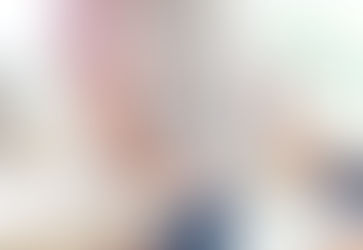Turf vs. Grass, Will We Ever Choose?
- Dr. Brianna Busch, DC
- Jan 27, 2016
- 4 min read

THE BIRTH OF ASTROTURF™
“The history of the Astrodome makes for interesting reading: of note, the original intention was for the surface to be natural grass, and the makers of the dome had installed translucent skylights to allow for grass to grow on the indoor surface. Alas, not enough light made it to the playing surface, the grass died, and Astroturf was born.” (1)
There has been a history of ACL tears, ankle sprains, and concussions with athletes playing on AstroTurf ™. (2) Turf burn and turf toe have also been noticed patterns, along with increased muscle soreness. (2)
TYPES OF ARTIFICIAL TURF
1st Generation: fibers = short/thin, friction = high, stiffness = high. (5)
2nd Generation: fibers = long/thick, materials = sand filling, rubber base, stiffness = reduced. (5)
3rd Generation: fibers = longest, materials = siliceous sand, rubber granules (more similar to the qualities of natural grass). (5)
PROPERTIES OF ARTIFICIAL TURF
“Most scientists feel that there are two specific material properties of the turf which can affect injury rates: the coefficient of friction, and the coefficient of restitution.” (2)
Coefficient of friction:
This relates to the “grip” of the field, i.e. “…how much force it will take for a planted foot to slip.” (2)
Previous research has shown an increase in ACL (anterior cruciate ligament) knee injuries with an increase in the coefficient of friction, essentially because the player’s foot is getting “caught in the turf.” (2)
Coefficient of restitution:
Put simply this is “…the ability of a field to absorb shock.” (2)
The unit of measurement for the coefficient of restitution is the G-Max value. (2) A low G-Max example would be rubber tire playground surfaces (good shock absorbers); a high G-Max example would be cement floors (poor shock absorbers). (2)
You can easily see that a field with a high G-Max can predispose an athlete to injury, as there is less shock absorption. (2)
On the flip side, playing on grass is not all rainbows and ponies. Athletes can be predisposed to injury when playing on grass, if the grass is not well maintained. (2)
RESEARCH: GRASS VS. TURF
In the article abstract by Ekstrand, Hagglund and Fuller, 2010, they looked at incidence and pattern of injury on artificial turf versus grass in elite football teams (both male and female). (4) The authors relayed that when comparing artificial turf to grass, the nature of overuse injury and incidence of acute injury did not substantially matter, but “[d]uring matches, men were less likely to sustain a quadriceps strain… and more likely to sustain an ankle sprain… on artificial turf.” (4)
When comparing 2nd/3rd generation artificial turf to grass, Steffen, Andersen and Bahr, 2007, quoted, “[w]e did not find any significant differences, neither for match nor for training injuries, when the incidence of acute injuries was compared between artificial turf and grass…” (5)
In terms of injury type and [body] location, “[i]njury rates were similar on artificial turf and grass…” (5) Twice the amount of severe injuries during matches, but a lower rate of minor injuries during play, were recorded on artificial turf as opposed to grass. (5) More trending towards ankle ligament, generalized ligament, and knee injuries were noticed with artificial turf as opposed to grass.
The authors concluded that, based on their study and chosen study population, “…the overall risk of injury is the same when playing and training on artificial turf as on natural grass.” (5)
There is still a lot of controversy in the topic of artificial turf versus grass in relationships to injury, one that we seemingly still do not have an answer to. (1)(2)(5)
IS THERE A PREFERENCE?
In the article abstract by Andersson, Ekblom & Krustrup, 2008 they demonstrated that when male football (soccer) players were asked to rate artificial turf (as compared to grass) on a scale of 0-10 (10 being worse than grass, 5 being equal to grass and 0 being better than grass), there was “…a negative overall impression… poorer ball control… and greater physical effort… on artificial turf than natural grass.” (3)
“So, as often occurs in the world of science, there is not a simple answer to our question at hand (grass or turf?). I hope this article has left you with more education on the history of artificial turf, the types that exist, and the potential injuries that may result from either artificial turf or natural grass.
With the knowledge that both surfaces can be associated with potential injury, it is important focus on things that are in your control such as a proper warm-up, balance and strength training, protective gear, and mental preparedness!”
–Dr. Busch
REFERENCES
1. Sporting Jim. The safety of artificial turf vs. grass as a sport playing surface. [Internet]. 2013 May 2. [cited 2015 Sep 8]. Available from: http://cjsmblog.com/2013/05/02/the-safety-of-artificial-turf-vs-grass-as-a-sport-playing-surface/
2. Drakos M. Artificial turf: does it increase the risk of sports injuries? An exploration of the effectiveness of cleats on artificial turf. [Internet]. 2008 Aug 21. Available from: https://www.hss.edu/conditions_artificial-turf-sports-injury-prevention.asp
3. Andersson H, Ekblom B, Krustrup P. Elite football on artificial turf versus natural grass: movement patterns, technical standards, and player impressions. J Sports Sci. 2008 Jan 15:26(2): 113-22.
4. Ekstrand J, Hagglund M, Fuller CW. Comparison of injuries sustained on artificial turf and grass by male and female elite football players. Scand J Med Sci sports. 2011: 21: 824-32. doi: 10.1111/j.1600-0838.2010.01118.x
5. Steffen K, Andersen TE, Bahr R. Risk of injury on artificial turf and natural grass in young female football players. Br J Sports Med. 2007. 41(Suppl 1): i33-7. doi: 10.1136/bjsm.2007.036665






























Comments